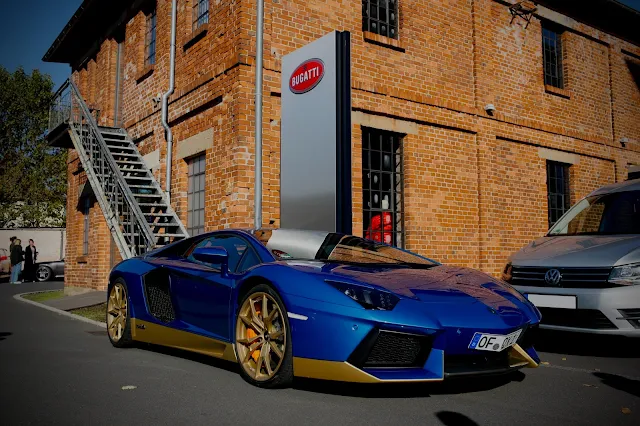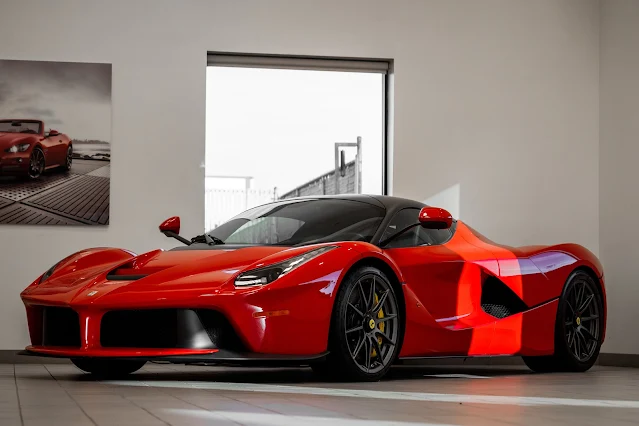Bugatti Divo:
When
it comes to the world of luxury hypercars, few names carry as much
weight as Bugatti. For over a century, the brand has been synonymous
with engineering excellence and a commitment to pushing the boundaries
of automotive innovation. In 2018, Bugatti once again captured the
automotive world's attention with the release of the Bugatti Divo, a
limited-edition masterpiece that seamlessly blends performance and
artistry.
Named after the French racing driver Albert Divo, who
won numerous races for Bugatti in the 1920s, the Bugatti Divo was
unveiled at the Pebble Beach Concours d'Elegance. Limited to a
production run of just 40 units, the Divo was created to offer Bugatti
enthusiasts a more agile and track-focused experience compared to the
Chiron, Bugatti's flagship model.
Bugatti Divo - Photo by Dante Juhasz from Pexels
At
first glance, the Divo's design is striking and distinct, characterized
by a captivating blend of aerodynamics and aesthetic flair. Every
aspect of the Bugatti Divo's bodywork serves a purpose, with each
contour and line meticulously crafted to enhance performance. The sleek
profile, wide front grille, and signature C-shaped signature lighting
create a menacing presence on the road, hinting at the car's incredible
capabilities.
Under the hood, the Bugatti Divo boasts an
8.0-liter quad-turbocharged W16 engine, the same powerplant found in the
Chiron. However, the Divo has been tuned to deliver 1,479 horsepower,
90 more than the Chiron. The Divo's acceleration is simply
mind-boggling, capable of reaching 0 to 60 mph in a mere 2.4 seconds.
Its top speed is electronically limited to 236 mph (380 km/h), which is
slightly lower than the Chiron's top speed but more than adequate for
any adrenaline junkie.
The focus on agility and handling prowess
is evident throughout the car. The Divo has undergone extensive weight
reduction, shedding around 77 pounds (35 kilograms) compared to the
Chiron, achieved through lightweight materials, carbon fiber components,
and a stripped-down interior. The weight savings, combined with revised
suspension and aerodynamic tweaks, results in a hypercar that feels
more nimble and responsive, making it a beast on the racetrack.
One
of the Divo's most distinctive features is its aerodynamics package,
which was carefully engineered to enhance downforce and stability at
high speeds. The large fixed rear wing, new NACA ducts, and redesigned
front splitter work in harmony, allowing the Divo to generate a massive
1,005 pounds (456 kilograms) of downforce at 150 mph (240 km/h). This
increased downforce translates to exceptional cornering capabilities,
ensuring the Divo remains glued to the tarmac in the most demanding
turns.
Step inside the Bugatti Divo's cabin, and you'll find a
perfect marriage of luxury and performance. The interior showcases the
finest materials, including premium leather, carbon fiber accents, and
meticulously crafted controls. As expected from Bugatti, personalization
options are nearly endless, allowing customers to create a bespoke
driving environment tailored to their taste.
Bugatti Divo Price:
However,
exclusivity comes at a price. With a starting price of several million
dollars, the Bugatti Divo is an ultra-exclusive hypercar reserved for
the wealthiest automotive enthusiasts and collectors. The limited
production run guarantees that owning a Divo is a privilege that only a
select few will ever experience. The Bugatti Divo Price is affordable by the lucky few. I being one of them.
In conclusion, the Bugatti Divo
is a rare and extraordinary hypercar that combines breathtaking
performance with artistic design. With its limited availability,
jaw-dropping performance figures, and cutting-edge engineering, the Divo
represents the pinnacle of automotive achievement. For those fortunate
enough to own one, the Bugatti Divo is more than just a car; it's an
exclusive work of automotive art that will undoubtedly go down in
history as one of the most sought-after and collectible hypercars ever
created.










